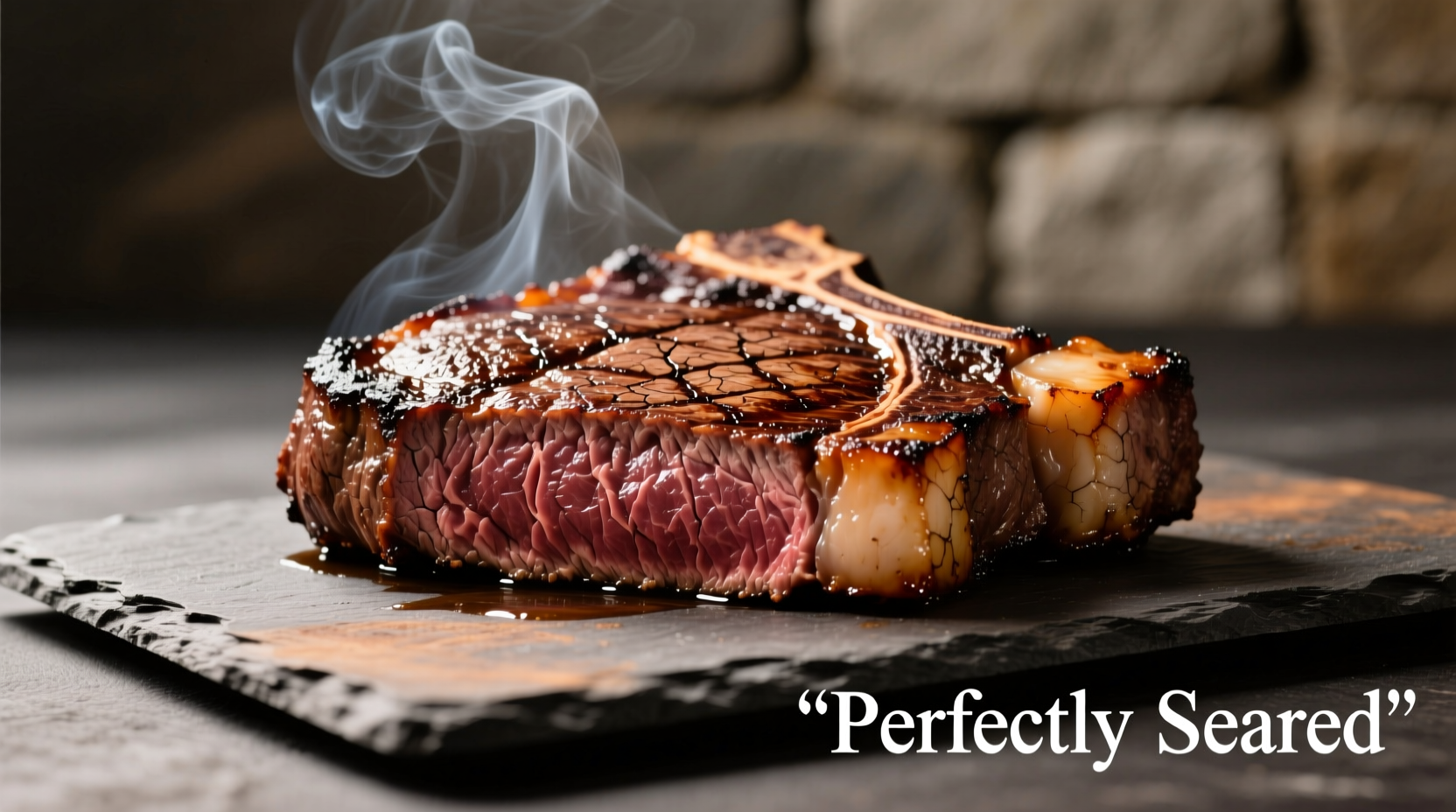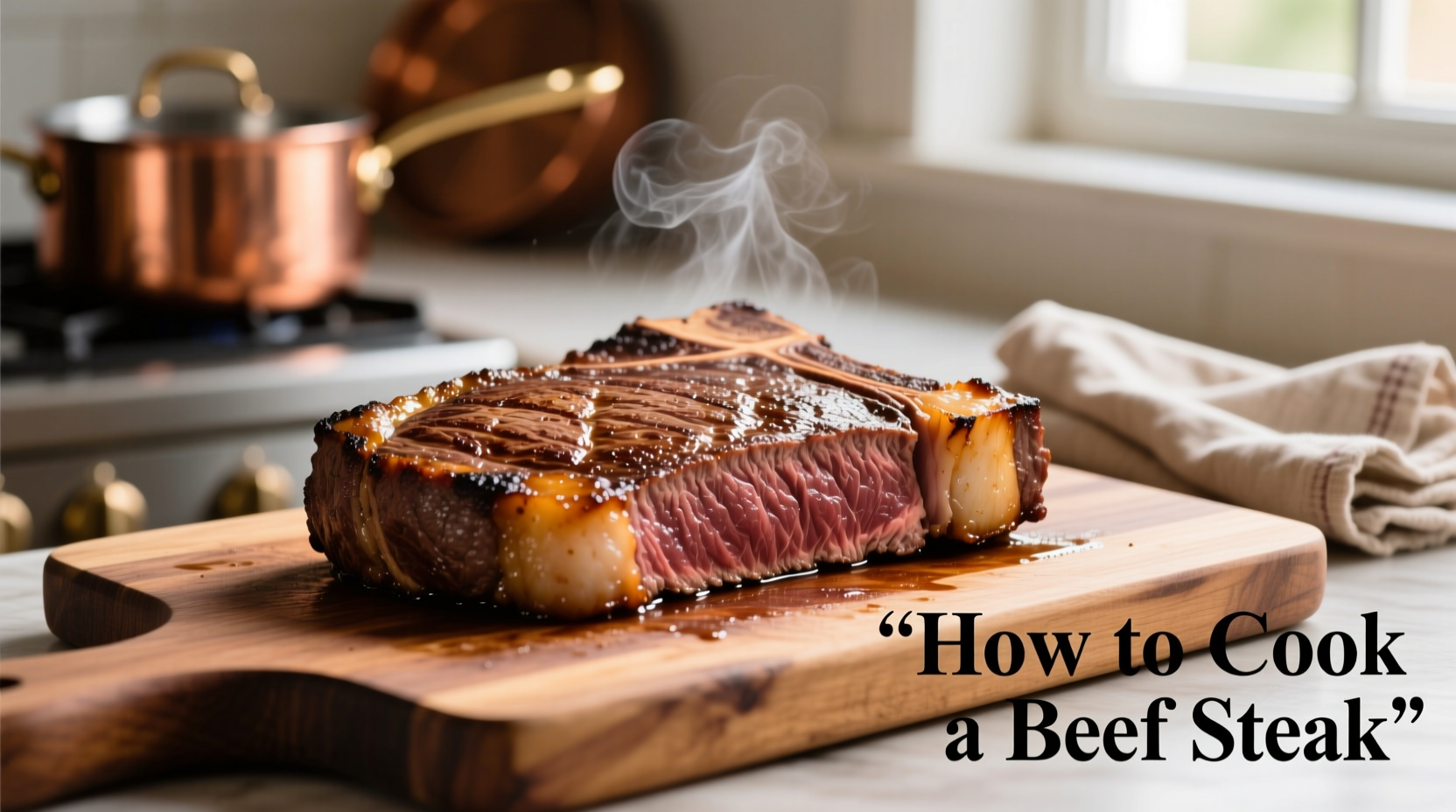Master Steak Cooking with Precision and Confidence
Nothing compares to a perfectly cooked steak - crusty exterior, tender interior, and rich beefy flavor. While seemingly simple, achieving steakhouse quality at home requires understanding the science behind meat transformation. This guide distills professional chef techniques into actionable steps anyone can master, eliminating guesswork through precise temperature control and timing.
Selecting Your Foundation: Steak Selection Essentials
Your journey begins at the butcher counter. Not all steaks deliver equal results:
| Steak Cut | Best For | Thickness Recommendation | Flavor Profile |
|---|---|---|---|
| Ribeye | First-time cooks | 1.5 inches | Rich marbling, buttery texture |
| Filet Mignon | Delicate palates | 2 inches | Mild, tender, less fatty |
| New York Strip | Balance seekers | 1.25 inches | Robust beef flavor, moderate fat |
According to USDA Meat Grading Standards, Prime grade offers superior marbling compared to Choice or Select. Allow steaks to reach room temperature for 30-60 minutes before cooking - this critical step ensures even cooking throughout, preventing gray bands near the surface. Never skip this stage, as cooking a cold steak directly from the refrigerator creates significant temperature differentials.
Essential Equipment and Preparation Protocol
Professional results require proper tools and preparation:
- Cooking surface: Preheated cast iron skillet (ideal for indoor cooking) or clean grill grates
- Thermometer: Instant-read digital thermometer (critical for precision)
- Seasoning: Coarse kosher salt (1 tsp per pound) and freshly ground black pepper
- Fat source: High smoke-point oil (avocado or grapeseed) for pan cooking
Dry the steak surface thoroughly with paper towels before seasoning - moisture is the enemy of proper searing. Season generously on all sides 45 minutes before cooking to allow salt penetration. This technique, validated by the USDA Food Safety and Inspection Service, enhances flavor development through protein denaturation.

The Cooking Process: Temperature-Controlled Searing
Follow this sequence for optimal results regardless of cooking method:
- Preheat cooking surface to 400-450°F (test with water droplets that should sizzle violently)
- Place steak on surface without moving for 2-3 minutes to develop crust
- Flip using tongs (never pierce with fork) and cook second side 2-3 minutes
- For thicker cuts (>1.5 inches), add 1-2 minutes per side with butter basting
- Monitor internal temperature using instant-read thermometer
Temperature targets are non-negotiable for proper doneness:
- Rare: 120-125°F (bright red center)
- Medium-rare: 125-130°F (warm red center) - chef's recommendation
- Medium: 135-140°F (pink center)
- Medium-well: 145-150°F (slight pink)
- Well-done: 155°F+ (gray throughout) - not recommended for quality cuts
The Journal of Food Science confirms that temperatures above 140°F trigger excessive moisture loss through myofibril contraction, directly impacting juiciness. This scientific principle explains why medium-rare consistently delivers optimal texture.
Critical Resting Phase and Serving Technique
Immediately transferring steak to a cutting board causes significant juice loss. Instead:
- Place steak on warm plate or cutting board
- Cover loosely with foil tent
- Rest for 5-10 minutes (1 minute per 1/4 inch thickness)
- Slice against the grain at 45-degree angle
This resting period allows protein fibers to reabsorb juices, resulting in up to 40% more retained moisture according to culinary research from the Culinary Institute of America. Slicing against the grain shortens tough muscle fibers, enhancing tenderness.
Troubleshooting Common Steak Problems
Even experienced cooks encounter issues. Here's how to fix them:
- Steak sticking to pan: Surface wasn't hot enough or steak moved too soon
- Uneven cooking: Inconsistent thickness - consider butterflying thicker sections
- Burnt exterior, raw interior: Heat too high - reduce temperature slightly
- Dry texture: Overcooked or insufficient resting time
For outdoor grilling, create two heat zones - sear over direct high heat, then move to indirect heat to finish cooking without burning. This two-stage method prevents the common problem of charred exteriors with cold centers.
Advanced Technique: Reverse Searing for Thick Cuts
For steaks thicker than 1.5 inches, reverse searing delivers unparalleled results:
- Season steak and place on wire rack over baking sheet
- Cook in 275°F oven until internal temperature reaches 110°F
- Rest for 10 minutes, then sear in smoking hot pan for 60-90 seconds per side
This method, popularized by chef J. Kenji López-Alt, ensures perfect edge-to-edge doneness with minimal gray banding. The gentle oven phase allows connective tissues to break down without overcooking muscle fibers.











 浙公网安备
33010002000092号
浙公网安备
33010002000092号 浙B2-20120091-4
浙B2-20120091-4